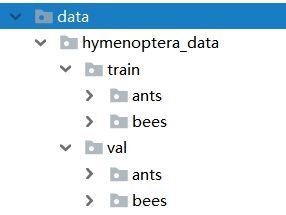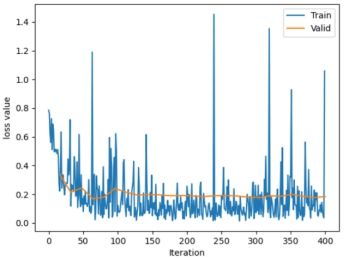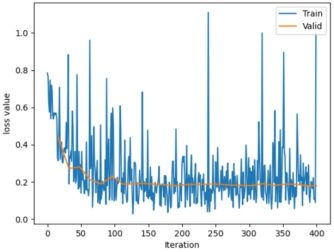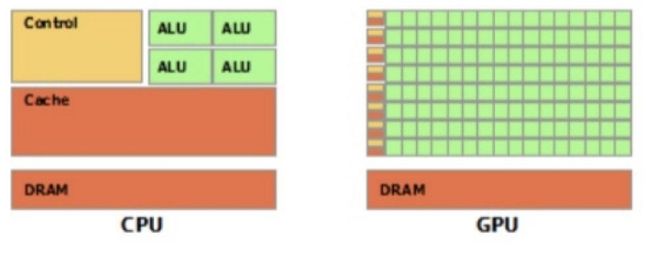PyTorch学习笔记-7.PyTorch训练技巧
7.PyTorch训练技巧
7.1.模型保存与加载
保存:
torch.save
主要参数:
• obj:对象
• f:输出路径
保存分为两种模式:
1: 保存整个Module,即保存了整个模型的框架和参数
torch.save(net, path)
2: 保存模型参数,即只保存模型的参数,下次使用时需要自己重新构建框架
state_dict = net.state_dict()
torch.save(state_dict , path)
加载:
2. torch.load
主要参数
• f:文件路径
• map_location:指定存放位置, cpu or gpu
加载也有两种模式,与保存的两种方式对应,即加载模型和加载参数
代码实现:
模型的保存
# -*- coding: utf-8 -*-
import torch
import torch.nn as nn
# 定义模型
class LeNet2(nn.Module):
def __init__(self, classes):
super(LeNet2, self).__init__()
self.features = nn.Sequential(
nn.Conv2d(3, 6, 5),
nn.ReLU(),
nn.MaxPool2d(2, 2),
nn.Conv2d(6, 16, 5),
nn.ReLU(),
nn.MaxPool2d(2, 2)
)
self.classifier = nn.Sequential(
nn.Linear(16*5*5, 120),
nn.ReLU(),
nn.Linear(120, 84),
nn.ReLU(),
nn.Linear(84, classes)
)
def forward(self, x):
x = self.features(x)
x = x.view(x.size()[0], -1)
x = self.classifier(x)
return x
def initialize(self):
for p in self.parameters():
p.data.fill_(2020)
# 创建模型
net = LeNet2(classes=10)
# "训练"
print("训练前: ", net.features[0].weight[0, ...])
net.initialize()
print("训练后: ", net.features[0].weight[0, ...])
# 设置保存路径,分别保存模型与参数
path_model = "./model.pkl"
path_state_dict = "./model_state_dict.pkl"
# 保存整个模型
torch.save(net, path_model)
# 保存模型参数
net_state_dict = net.state_dict()
torch.save(net_state_dict, path_state_dict)
| 训练前: tensor([[[ 0.0791, -0.0743, -0.0078, -0.0547, 0.0729], [ 0.0526, 0.1094, 0.1121, 0.0600, 0.1051], ... [-0.0740, 0.0235, 0.1109, 0.0119, 0.0783]]], grad_fn= 训练后: tensor([[[2020., 2020., 2020., 2020., 2020.], [2020., 2020., 2020., 2020., 2020.], ... [2020., 2020., 2020., 2020., 2020.]]], grad_fn= |
保存后,可以在保存的目录查看到保存的模型文件
模型的加载:
1.加载整个模型
# -*- coding: utf-8 -*-
import torch
import torch.nn as nn
flag = 1
# flag = 0
if flag:
path_model = "./model.pkl"
net_load = torch.load(path_model)
print(net_load)
print(net_load.features[0].weight[0, ...])
| LeNet2( (features): Sequential( (0): Conv2d(3, 6, kernel_size=(5, 5), stride=(1, 1)) (1): ReLU() (2): MaxPool2d(kernel_size=2, stride=2, padding=0, dilation=1, ceil_mode=False) (3): Conv2d(6, 16, kernel_size=(5, 5), stride=(1, 1)) (4): ReLU() (5): MaxPool2d(kernel_size=2, stride=2, padding=0, dilation=1, ceil_mode=False) ) (classifier): Sequential( (0): Linear(in_features=400, out_features=120, bias=True) (1): ReLU() (2): Linear(in_features=120, out_features=84, bias=True) (3): ReLU() (4): Linear(in_features=84, out_features=10, bias=True) ) ) tensor([[[2020., 2020., 2020., 2020., 2020.], [2020., 2020., 2020., 2020., 2020.], ... [2020., 2020., 2020., 2020., 2020.]]], grad_fn= |
2.加载模型参数,并自己创建模型
class LeNet2(nn.Module):
def __init__(self, classes):
super(LeNet2, self).__init__()
self.features = nn.Sequential(
nn.Conv2d(3, 6, 5),
nn.ReLU(),
nn.MaxPool2d(2, 2),
nn.Conv2d(6, 16, 5),
nn.ReLU(),
nn.MaxPool2d(2, 2)
)
self.classifier = nn.Sequential(
nn.Linear(16*5*5, 120),
nn.ReLU(),
nn.Linear(120, 84),
nn.ReLU(),
nn.Linear(84, classes)
)
def forward(self, x):
x = self.features(x)
x = x.view(x.size()[0], -1)
x = self.classifier(x)
return x
def initialize(self):
for p in self.parameters():
p.data.fill_(2020)
flag = 1
# flag = 0
if flag:
path_state_dict = "./model_state_dict.pkl"
state_dict_load = torch.load(path_state_dict)
net_new = LeNet2(classes=10)
print("加载前: ", net_new.features[0].weight[0, ...])
net_new.load_state_dict(state_dict_load)
print("加载后: ", net_new.features[0].weight[0, ...])
| 加载前: tensor([[[-0.1134, 0.0326, -0.0086, 0.0342, -0.0673], [-0.0222, -0.1068, 0.0853, 0.0753, -0.0508], ... [ 0.0497, -0.0221, 0.0892, -0.0781, -0.0866]]], grad_fn= 加载后: tensor([[[2020., 2020., 2020., 2020., 2020.], [2020., 2020., 2020., 2020., 2020.], ... [2020., 2020., 2020., 2020., 2020.]]], grad_fn= |
断点续训练
在迭代过程中,如果训练时间很长,如果中间意外中断,那么又需要从头开始训练,我们可以设置检查点,例如每5个epoch设置一次检查点,这样如果中断,从上次的检查点获取之前的模型参数即可。
设置检查点:通常需要将模型参数、优化器参数、训练轮数保存
checkpoint = {
"model_state_dict": net.state_dict(),
"optimizer_state_dict": optimizer.state_dict(),
"epoch": epoch
}
设置保存点代码:
checkpoint = {"model_state_dict": net.state_dict(),
"optimizer_state_dict": optimizer.state_dict(),
"epoch": epoch}
path_checkpoint = "./checkpoint_{}_epoch.pkl".format(epoch)
torch.save(checkpoint, path_checkpoint)
断点恢复代码:
path_checkpoint = "./checkpoint_4_epoch.pkl"
checkpoint = torch.load(path_checkpoint)
net.load_state_dict(checkpoint['model_state_dict'])
optimizer.load_state_dict(checkpoint['optimizer_state_dict'])
start_epoch = checkpoint['epoch']
# 设置学习率也是从新的epoch开始的
scheduler.last_epoch = start_epoch
7.2.模型微调
模型微调 - Model Finetune:模型的迁移学习
当我们训练一个模型时,如果从头训练可能比较困难,那么可以基于别人已经训练好的模型,在其基础上再结合自己的数据进行训练,这样训练的模型往往会达到更好的效果。
模型微调,也称为迁移学习,即将已经训练好的模型迁移到我们将要训练的模型中
例如对于下面的模型:
可以将前面卷积层部分看做特征提取,将后面的全连接层看做是分类,那么前面的卷积层的模型和参数我们就可以拿来直接使用,而针对我们自己的数据自定义后面的全连接层。
在训练时,对于前面的卷积层,我们不需要修改其参数或者微小的改动其参数,因此,我们在训练时可以将前面的卷积层和后面的全连接层分为两个组,前面组可以设置其梯度为0,或者设置学习率为0,也可以为它们设置很小的数,这样相当于主要训练的就是后面的全连接层的参数。
因此,模型微调过程总结为:
模型微调步骤:
1. 获取预训练模型参数
2. 加载模型( load_state_dict)
3. 修改输出层
模型微调训练方法:
1. 固定预训练的参数(requires_grad =False; lr=0)
2. Features Extractor较小学习率( params_group)
案例:
以二分类为例,我们做蚂蚁和蜜蜂的二分类
数据:
训练集:各120张 验证集:各70张
由于数据量较少,所以我们可以使用已经训练好的模型Finetune Resnet-18,在其基础上训练我们的二分类模型。
代码实现:
数据准备:
同样,将resnet18模型的参数放入data目录下
![]()
首先,准备一个DataSet
# -*- coding: utf-8 -*-
import os
from PIL import Image
from torch.utils.data import Dataset
class AntsDataset(Dataset):
def __init__(self, data_dir, transform=None):
self.label_name = {"ants": 0, "bees": 1}
# 调用get_img_info获取图片路径及标签
self.data_info = self.get_img_info(data_dir)
self.transform = transform
# 返回数据以及对应的标签
def __getitem__(self, index):
path_img, label = self.data_info[index]
img = Image.open(path_img).convert('RGB')
if self.transform is not None:
img = self.transform(img)
return img, label
# 返回样本数量
def __len__(self):
return len(self.data_info)
def get_img_info(self, data_dir):
data_info = list()
for root, dirs, _ in os.walk(data_dir):
# 遍历类别
for sub_dir in dirs:
img_names = os.listdir(os.path.join(root, sub_dir))
img_names = list(filter(lambda x: x.endswith('.jpg'), img_names))
# 遍历图片
for i in range(len(img_names)):
img_name = img_names[i]
path_img = os.path.join(root, sub_dir, img_name)
label = self.label_name[sub_dir]
# 将图片路径及label添加到data_info中
data_info.append((path_img, int(label)))
if len(data_info) == 0:
# 如果data_info中没有图片,通过raise显示地引发异常信息
raise Exception("\ndata_dir:{} is a empty dir! Please checkout your path to images!".format(data_dir))
return data_info
训练代码实现
# -*- coding: utf-8 -*-
import os
import numpy as np
import torch
import random
import torch.nn as nn
from torch.utils.data import DataLoader
import torchvision.transforms as transforms
import torch.optim as optim
from matplotlib import pyplot as plt
from tools.my_dataset import AntsDataset
import torchvision.models as models
BASEDIR = os.path.dirname(os.path.abspath(__file__))
# 设置device,用来设置是否使用gpu训练
device = torch.device("cuda" if torch.cuda.is_available() else "cpu")
print("use device :{}".format(device))
def set_seed(seed=1):
random.seed(seed)
np.random.seed(seed)
torch.manual_seed(seed)
torch.cuda.manual_seed(seed)
set_seed(1) # 设置随机种子
label_name = {"ants": 0, "bees": 1}
# 参数设置
MAX_EPOCH = 25
BATCH_SIZE = 16
LR = 0.001
# 每几批数据打印一次结果,10*16=160<240
log_interval = 10
# 每几轮做一次验证
val_interval = 1
classes = 2
start_epoch = -1
# 学习率下降间隔数
lr_decay_step = 7
# ============================ step 1/5 数据 ============================
data_dir = os.path.join(BASEDIR, "..", "..", "data/hymenoptera_data")
train_dir = os.path.join(data_dir, "train")
valid_dir = os.path.join(data_dir, "val")
norm_mean = [0.485, 0.456, 0.406]
norm_std = [0.229, 0.224, 0.225]
train_transform = transforms.Compose([
transforms.RandomResizedCrop(224),
# 概率水平翻转
transforms.RandomHorizontalFlip(),
transforms.ToTensor(),
transforms.Normalize(norm_mean, norm_std),
])
valid_transform = transforms.Compose([
transforms.Resize(256),
# 按照中心裁剪
transforms.CenterCrop(224),
transforms.ToTensor(),
transforms.Normalize(norm_mean, norm_std),
])
# 构建MyDataset实例
train_data = AntsDataset(data_dir=train_dir, transform=train_transform)
valid_data = AntsDataset(data_dir=valid_dir, transform=valid_transform)
# 构建DataLoder
train_loader = DataLoader(dataset=train_data, batch_size=BATCH_SIZE, shuffle=True)
valid_loader = DataLoader(dataset=valid_data, batch_size=BATCH_SIZE)
# ============================ step 2/5 模型 ============================
# 1/3 构建模型
resnet18_ft = models.resnet18()
# 2/3 加载参数
flag = 0
# flag = 1
if flag:
# 加载resnet18模型参数
path_pretrained_model = os.path.join(BASEDIR, "..", "..", "data/resnet18-5c106cde.pth")
state_dict_load = torch.load(path_pretrained_model)
resnet18_ft.load_state_dict(state_dict_load)
# 法1 : 冻结卷积层
flag_m1 = 0
# flag_m1 = 1
if flag_m1:
for param in resnet18_ft.parameters():
param.requires_grad = False
print("conv1.weights[0, 0, ...]:\n {}".format(resnet18_ft.conv1.weight[0, 0, ...]))
# 3/3 替换全连接fc层
# 获取原resnet18模型的全连接层的输入特征数量
num_ftrs = resnet18_ft.fc.in_features
# 自定义线性层并赋值给resnet18_ft模型,线性层输入为原resnet18模型的全连接层输入,输入为分类数
resnet18_ft.fc = nn.Linear(num_ftrs, classes)
# 将模型放在gpu上运行
resnet18_ft.to(device)
# ============================ step 3/5 损失函数 ============================
criterion = nn.CrossEntropyLoss() # 选择损失函数
# ============================ step 4/5 优化器 ============================
# 法2 : conv 小学习率
flag = 0
# flag = 1
if flag:
# 为卷积层部分设置一个参数组,为全连接层部分设置一个参数组
# 获取全连接层的参数地址,并存储为list
fc_params_id = list(map(id, resnet18_ft.fc.parameters()))
# 获取resnet18_ft模型的所有参数,并过滤掉所有全连接层的参数,即为非全连接层参数
base_params = filter(lambda p: id(p) not in fc_params_id, resnet18_ft.parameters())
# 为非全连接层参数设置学习率为0.1,全连接层设置正常学习率,共用momentum
optimizer = optim.SGD([
{'params': base_params, 'lr': LR*0.1}, # 0
{'params': resnet18_ft.fc.parameters(), 'lr': LR}], momentum=0.9)
else:
# 所有参数都使用同一个学习率
optimizer = optim.SGD(resnet18_ft.parameters(), lr=LR, momentum=0.9) # 选择优化器
# 设置学习率下降策略
scheduler = torch.optim.lr_scheduler.StepLR(optimizer, step_size=lr_decay_step, gamma=0.1)
# ============================ step 5/5 训练 ============================
# 创建两个list,存放训练集和测试集每批的loss
train_curve = list()
valid_curve = list()
for epoch in range(start_epoch + 1, MAX_EPOCH):
# 分别定义平均loss、预测正确总数、总样本数
loss_mean = 0.
correct = 0.
total = 0.
# 设置模型为训练模式
resnet18_ft.train()
for i, data in enumerate(train_loader):
# forward
inputs, labels = data
# 数据与标签也要放到gpu上运行
inputs, labels = inputs.to(device), labels.to(device)
outputs = resnet18_ft(inputs)
# backward
optimizer.zero_grad()
loss = criterion(outputs, labels)
loss.backward()
# update weights
optimizer.step()
# 统计分类情况
# outputs.data为16×2,即样本数×分类数
# torch.max(outputs.data, 1)从第一维度上求最大,即每个样本的最大值和对应的下标
# predicted记录了输出的两个分类较大数的下标
_, predicted = torch.max(outputs.data, 1)
# 计算总样本数
total += labels.size(0)
# 计算总预测正确数,.cpu()是将张量移到cpu上,因为张量的某些操作不能再cuda上执行
correct += (predicted == labels).squeeze().cpu().sum().numpy()
# 打印训练信息
# 计算总loss
loss_mean += loss.item()
# 将loss添加到train_curve中
train_curve.append(loss.item())
if (i+1) % log_interval == 0:
# 计算log_interval批的平均loss
loss_mean = loss_mean / log_interval
# 打印当前的epoch数/总epoch数、当前批次/总批次、平均loss、准确率
print("Training:Epoch[{:0>3}/{:0>3}] Iteration[{:0>3}/{:0>3}] Loss: {:.4f} Acc:{:.2%}".format(
epoch, MAX_EPOCH, i+1, len(train_loader), loss_mean, correct / total))
# 对平均loss清零
loss_mean = 0.
# 打印卷积层权重
if flag_m1:
print("epoch:{} conv1.weights[0, 0, ...] :\n {}".format(epoch, resnet18_ft.conv1.weight[0, 0, ...]))
scheduler.step() # 更新学习率
# 设置检查点,用来保存模型训练中的参数信息,每12轮保存一次
if epoch % 12 == 0:
checkpoint = {"model_state_dict": resnet18_ft.state_dict(),
"optimizer_state_dict": optimizer.state_dict(),
"epoch": epoch}
path_checkpoint = "./checkpoint_{}_epoch.pkl".format(epoch)
torch.save(checkpoint, path_checkpoint)
# 进行测试
if (epoch+1) % val_interval == 0:
correct_val = 0.
total_val = 0.
loss_val = 0.
# 设置模型为测试模式
resnet18_ft.eval()
# with torch.no_grad():被该语句包裹起来的部分将不会计算梯度,因为预测阶段不更新梯度
with torch.no_grad():
for j, data in enumerate(valid_loader):
inputs, labels = data
inputs, labels = inputs.to(device), labels.to(device)
outputs = resnet18_ft(inputs)
loss = criterion(outputs, labels)
_, predicted = torch.max(outputs.data, 1)
total_val += labels.size(0)
correct_val += (predicted == labels).squeeze().cpu().sum().numpy()
loss_val += loss.item()
loss_val_mean = loss_val/len(valid_loader)
valid_curve.append(loss_val_mean)
print("Valid:\t Epoch[{:0>3}/{:0>3}] Iteration[{:0>3}/{:0>3}] Loss: {:.4f} Acc:{:.2%}".format(
epoch, MAX_EPOCH, j+1, len(valid_loader), loss_val_mean, correct_val / total_val))
# 绘图,绘制训练集的loss图
train_x = range(len(train_curve))
train_y = train_curve
train_iters = len(train_loader)
# 由于valid中记录的是epochloss,需要对记录点进行转换到iterations
valid_x = np.arange(1, len(valid_curve)+1) * train_iters*val_interval
valid_y = valid_curve
plt.plot(train_x, train_y, label='Train')
plt.plot(valid_x, valid_y, label='Valid')
plt.legend(loc='upper right')
plt.ylabel('loss value')
plt.xlabel('Iteration')
plt.show()
当不使用resnet18的参数,只使用模型结构自己训练时的结构如下:
| use device :cuda Training:Epoch[000/025] Iteration[010/016] Loss: 0.7210 Acc:48.75% Valid: Epoch[000/025] Iteration[010/010] Loss: 0.6928 Acc:48.37% Training:Epoch[001/025] Iteration[010/016] Loss: 0.6516 Acc:58.75% Valid: Epoch[001/025] Iteration[010/010] Loss: 0.6630 Acc:59.48% ... Training:Epoch[024/025] Iteration[010/016] Loss: 0.5653 Acc:68.75% Valid: Epoch[024/025] Iteration[010/010] Loss: 0.6032 Acc:67.97% |
当使用resnet18的参数,但是设置统一的学习率时结果如下:
| use device :cuda Training:Epoch[000/025] Iteration[010/016] Loss: 0.6300 Acc:65.00% Valid: Epoch[000/025] Iteration[010/010] Loss: 0.3385 Acc:90.20% Training:Epoch[001/025] Iteration[010/016] Loss: 0.3122 Acc:90.00% Valid: Epoch[001/025] Iteration[010/010] Loss: 0.2142 Acc:93.46% ... Training:Epoch[024/025] Iteration[010/016] Loss: 0.1293 Acc:96.25% Valid: Epoch[024/025] Iteration[010/010] Loss: 0.1832 Acc:96.08% |
当使用resnet18的参数,并设置卷积层学习率为0时结果如下:
| use device :cuda Training:Epoch[000/025] Iteration[010/016] Loss: 0.6572 Acc:60.62% Valid: Epoch[000/025] Iteration[010/010] Loss: 0.4565 Acc:84.97% Training:Epoch[001/025] Iteration[010/016] Loss: 0.4074 Acc:85.00% Valid: Epoch[001/025] Iteration[010/010] Loss: 0.2846 Acc:93.46% Training:Epoch[024/025] Iteration[010/016] Loss: 0.2039 Acc:93.12% Valid: Epoch[024/025] Iteration[010/010] Loss: 0.1854 Acc:96.73% |
当使用resnet18的参数,并设置卷积层学习率为较小值时结果如下:
| use device :cuda Training:Epoch[000/025] Iteration[010/016] Loss: 0.6543 Acc:61.25% Valid: Epoch[000/025] Iteration[010/010] Loss: 0.4412 Acc:85.62% Training:Epoch[001/025] Iteration[010/016] Loss: 0.3948 Acc:85.62% Valid: Epoch[001/025] Iteration[010/010] Loss: 0.2721 Acc:93.46% ... Training:Epoch[024/025] Iteration[010/016] Loss: 0.1888 Acc:93.12% Valid: Epoch[024/025] Iteration[010/010] Loss: 0.1801 Acc:96.73% |
7.3.GPU的使用
CPU (Central Processing Unit, 中央处理器):主要包括控制器和运算器
GPU (Graphics Processing Unit, 图形处理器):处理统一的大规模数据运算
cpu与gpu示意图如下:其中绿色为计算单元
在PyTorch中提供了数据或者模型在CPU和GPU之间迁移的方法:
将数据或者模型迁移到GPU:
data.to(“cuda”)
将数据或者模型迁移到CPU:
data.to(“CPU”)
其中,data表示Tensor或者Module
关于to函数:转换数据类型/设备
张量转换数据类型:
x = torch.ones((3, 3))
x = x.to(torch.float64)
张量转换设备:
x = torch.ones((3, 3))
x = x.to("cuda")
模型转换数据类型:即模型的所有参数都会转换数据类型
linear = nn.Linear(2, 2)
linear.to(torch.double)
模型转换设备:需要先创建device
gpu1 = torch.device("cuda")
linear.to(gpu1)
注意:
张量的to函数不执行inplace,因此需要重新赋值
模型的to函数执行inplace,因此无需重新赋值
代码实现:
Tonsor转换GPU设备
# -*- coding: utf-8 -*-
import torch
import torch.nn as nn
# 判断cuda是否可用,如果可用设置为cuda:0,否则设置为cpu
device = torch.device("cuda:0" if torch.cuda.is_available() else "cpu")
# flag = 0
flag = 1
if flag:
x_cpu = torch.ones((3, 3))
# 打印数据的设备信息,是否使用的cuda,以及内存地址
print("x_cpu:\ndevice: {} is_cuda: {} id: {}".format(x_cpu.device, x_cpu.is_cuda, id(x_cpu)))
# 将数据迁移到cuda
x_gpu = x_cpu.to(device)
print("x_gpu:\ndevice: {} is_cuda: {} id: {}".format(x_gpu.device, x_gpu.is_cuda, id(x_gpu)))
| x_cpu: device: cpu is_cuda: False id: 1736317533304 x_gpu: device: cuda:0 is_cuda: True id: 1736753674504 |
两次id不同,说明不是inplace操作
model转换GPU设备
# flag = 0
flag = 1
if flag:
net = nn.Sequential(nn.Linear(3, 3))
# 打印模型的地址以及参数是否在cuda上
print("\nid:{} is_cuda: {}".format(id(net), next(net.parameters()).is_cuda))
net.to(device)
print("\nid:{} is_cuda: {}".format(id(net), next(net.parameters()).is_cuda))
| id:2716271949896 is_cuda: False id:2716271949896 is_cuda: True |
两次id相同,说明是inplace操作
查看gpu上的模型与数据的运行结果
# flag = 0
flag = 1
if flag:
output = net(x_gpu)
print("output is_cuda: {}".format(output.is_cuda))
# 如果模型在gpu而数据在cpu,则无法运行
# output = net(x_cpu)
| output is_cuda: True |
说明如果模型与数据都在gpu上,则输出也在gpu上
PyTorch中提供了一些cuda相关的常用方法:
1. torch.cuda.device_count():计算当前可见可用gpu数
2. torch.cuda.get_device_name():获取gpu名称
3. torch.cuda.manual_seed():为当前gpu设置随机种子
4. torch.cuda.manual_seed_all():为所有可见可用gpu设置随机种子
5. os.environ.setdefault("CUDA_VISIBLE_DEVICES", "2, 3"):设置当前可见的GPU
物理gpu:电脑自带的gpu硬件
可见gpu:PyTorch可用的gpu
例如:当设置可见gpu为2、3时,则可见gpu有两个,可见gpu0对应物理gpu2,可见gpu1对应物理gpu3
多GPU运行时,有一个主GPU,默认为gpu0,负责分发数据到其他GPU以及从其他GPU收集处理后的结果。
多gpu运算的分发并行机制:
torch.nn.DataParallel
功能:包装模型,实现分发并行机制
• module: 需要包装分发的模型
• device_ids: 可分发的gpu,默认分发到所有可见可用gpu
• output_device: 结果输出设备
torch.nn.DataParallel(module, device_ids=None,
output_device=None, dim=0)
代码实现:
# -*- coding: utf-8 -*-
import os
import numpy as np
import torch
import torch.nn as nn
# 配置可见的gpu的list,如果此电脑只有一个gpu,则只能配置0
gpu_list = [0] # [2, 3]
# 将gpu的格式变为 2,3 格式
gpu_list_str = ','.join(map(str, gpu_list))
# 配置物理gpu为可见gpu
os.environ.setdefault("CUDA_VISIBLE_DEVICES", gpu_list_str)
device = torch.device("cuda" if torch.cuda.is_available() else "cpu")
class FooNet(nn.Module):
def __init__(self, neural_num, layers=3):
super(FooNet, self).__init__()
self.linears = nn.ModuleList([nn.Linear(neural_num, neural_num, bias=False) for i in range(layers)])
def forward(self, x):
# 这里打印的是每个gpu上batch_size的数量,即除以gpu数量的结果
print("\nbatch size in forward: {}".format(x.size()[0]))
for (i, linear) in enumerate(self.linears):
x = linear(x)
x = torch.relu(x)
return x
if __name__ == "__main__":
batch_size = 16
# data
inputs = torch.randn(batch_size, 3)
labels = torch.randn(batch_size, 3)
inputs, labels = inputs.to(device), labels.to(device)
# model
net = FooNet(neural_num=3, layers=3)
# 将模型用DataParallel包装
net = nn.DataParallel(net)
# 将模型交给gpu,这样就会将一个batch_size的数据分发到所有可见的gpu上
net.to(device)
# 训练过程
for epoch in range(1):
outputs = net(inputs)
print("model outputs.size: {}".format(outputs.size()))
print("CUDA_VISIBLE_DEVICES :{}".format(os.environ["CUDA_VISIBLE_DEVICES"]))
print("device_count :{}".format(torch.cuda.device_count()))
| batch size in forward: 16 model outputs.size: torch.Size([16, 3]) CUDA_VISIBLE_DEVICES :0 device_count :1 |
gpu模型加载问题:
如果数据在gpu上时,当保存数据后,再次加载保存数据的文件时,默认会加载到gpu上,但是如果加载模型的机器没有gpu,会导致运行时报错,因此在加载模型时可以指定加载到cpu中。
如:torch.load(path_state _dict, map_location="cpu")
代码实现:
# -*- coding: utf-8 -*-
import os
import numpy as np
import torch
import torch.nn as nn
class FooNet(nn.Module):
def __init__(self, neural_num, layers=3):
super(FooNet, self).__init__()
self.linears = nn.ModuleList([nn.Linear(neural_num, neural_num, bias=False) for i in range(layers)])
def forward(self, x):
print("\nbatch size in forward: {}".format(x.size()[0]))
for (i, linear) in enumerate(self.linears):
x = linear(x)
x = torch.relu(x)
return x
# 将数据加载至cpu
gpu_list = [0]
gpu_list_str = ','.join(map(str, gpu_list))
os.environ.setdefault("CUDA_VISIBLE_DEVICES", gpu_list_str)
device = torch.device("cuda" if torch.cuda.is_available() else "cpu")
net = FooNet(neural_num=3, layers=3)
net.to(device)
# save
net_state_dict = net.state_dict()
path_state_dict = "./model_in_gpu_0.pkl"
torch.save(net_state_dict, path_state_dict)
# load
# 默认加载时,数据是以device="cuda"的形式加载的,但是如果加载的机器没有cuda,则会报错
state_dict_load = torch.load(path_state_dict)
# 为了解决上面的问题,加载时,可以将参数加载到cpu上,这样就不会报错
# state_dict_load = torch.load(path_state_dict, map_location="cpu")
print("state_dict_load:\n{}".format(state_dict_load))
| state_dict_load: OrderedDict([('linears.0.weight', tensor([[-0.4292, -0.5397, -0.0086], [ 0.1546, 0.5700, 0.5638], [ 0.1969, 0.5569, -0.1533]], device='cuda:0')), ('linears.1.weight', tensor([[ 0.5638, 0.1799, -0.1404], [ 0.2120, 0.2129, 0.0515], [-0.3619, -0.1249, 0.0383]], device='cuda:0')), ('linears.2.weight', tensor([[-0.2883, 0.3434, 0.0235], [ 0.2079, -0.3871, 0.4005], [ 0.5305, 0.5581, 0.3371]], device='cuda:0'))]) |
可以看到默认数据是加载到gpu上的
7.4.PyTorch常见报错
1.报错: ValueError: num_samples should be a positive integer value, but got num_samples=0
可能的原因:传入的Dataset中的len(self.data_info)==0,即传入该dataloader的dataset里没有数据
解决方法:
1. 检查dataset中的路径,路径不对,读取不到数据。
2. 检查Dataset的__len__()函数为何输出为零
2报错:TypeError: pic should be PIL Image or ndarray. Got
可能的原因:当前操作需要PIL Image或ndarray数据类型,但传入了Tensor
解决方法:
1. 检查transform中是否存在两次ToTensor()方法
2. 检查transform中每一个操作的数据类型变化
3报错:RuntimeError: invalid argument 0: Sizes of tensors must match except in dimension 0. Got 93 and 89 in dimension 1 at /Users/soumith/code/builder/wheel/pytorch-src/aten/src/TH/generic/THTensorMath.cpp:3616
可能的原因:dataloader的__getitem__函数中,返回的图片形状不一致,导致无法stack
解决方法:
检查__getitem__函数中的操作
4报错:conv: RuntimeError: Given groups=1, weight of size 6 1 5 5, expected input[16, 3, 32, 32] to have 1 channels, but got 3 channels instead
linear: RuntimeError: size mismatch, m1: [16 x 576], m2: [400 x 120] at ../aten/src/TH/generic/THTensorMath.cpp:752
可能的原因:网络层输入数据与网络的参数不匹配
解决方法:
1. 检查对应网络层前后定义是否有误
2. 检查输入数据shape
5报错:AttributeError: 'DataParallel' object has no attribute 'linear'
可能的原因:并行运算时,模型被dataparallel包装,所有module都增加一个属性 module. 因此需要通过 net.module.linear调用
解决方法:
网络层前加入module.
6报错: RuntimeError: Attempting to deserialize object on a CUDA device but torch.cuda.is_available() is False. If you are running on a CPU-only machine, please use torch.load with map_location=torch.device('cpu') to map your storages to the CPU.
可能的原因:gpu训练的模型保存后,在无gpu设备上无法直接加载
解决方法:
需要设置map_location="cpu"
7报错:AttributeError: Can't get attribute 'FooNet2' on 可能的原因:保存的网络模型在当前python脚本中没有定义 解决方法: 提前定义该类 8报错:RuntimeError: Assertion `cur_target >= 0 && cur_target < n_classes' failed. at ../aten/src/THNN/generic/ClassNLLCriterion.c:94 可能的原因: 标签数大于等于类别数量,即不满足 cur_target < n_classes,通常是因为标签从1开始而不是从0开始 解决方法: 修改label,从0开始,例如:10分类的标签取值应该是0-9 9报错:RuntimeError: expected device cuda:0 and dtype Long but got device cpu and dtype Long Expected object of backend CPU but got backend CUDA for argument #2 'weight' 可能的原因:需计算的两个数据不在同一个设备上 解决方法: 采用to函数将数据迁移到同一个设备上 10报错:RuntimeError: DataLoader worker (pid 27) is killed by signal: Killed. Details are lost due to multiprocessing. Rerunning with num_workers=0 may give better error trace. 可能原因:内存不够(不是gpu显存,是内存) 解决方法: 申请更大内存 11报错: RuntimeError: reduce failed to synchronize: device-side assert triggered 可能的原因:采用BCE损失函数的时候,input必须是0-1之间,由于模型最后没有加sigmoid激活函数,导致的。 解决方法: 让模型输出的值域在[0, 1] 12报错:RuntimeError: unexpected EOF. The file might be corrupted. 可能的原因:torch.load加载模型过程报错,因为模型传输过程中有问题,重新传一遍模型即可 13 报错:UnicodeDecodeError: 'utf-8' codec can't decode byte 0xff in position 1: invalid start byte 可能的原因:python2保存,python3加载,会报错 解决方法: 把encoding改为encoding='iso-8859-1' check_p = torch.load(path, map_location="cpu", encoding='iso-8859-1') 14报错:RuntimeError: Input type (torch.cuda.FloatTensor) and weight type (torch.FloatTensor) should be the same 问题原因:数据张量已经转换到GPU上,但模型参数还在cpu上,造成计算不匹配问题。 解决方法: 通过添加model.cuda()将模型转移到GPU上以解决这个问题。或者通过添加model.to(cuda)解决问题 15报错:RuntimeError: cuDNN error: CUDNN_STATUS_INTERNAL_ERROR 问题原因:jupyter notebook中调用了cuda,但没有释放 解决方法: 把对应的ipynb文件shutdown就可以了 16报错: RuntimeError: CUDA out of memory. Tried to allocate 46.00 MiB (GPU 0; 2.00 GiB total capacity; 54.79 MiB already allocated; 39.30 MiB free; 74.00 MiB reserved in total by PyTorch) 原因: 可以看出在GPU充足的情况下无法使用,本机有两个GPU,其中一个GPU的内存不可用? 解决办法: 在model文件(只有model中使用了cuda)添加下面两句: import os os.environ['CUDA_VISIBLE_DEVICES']='2, 3'










